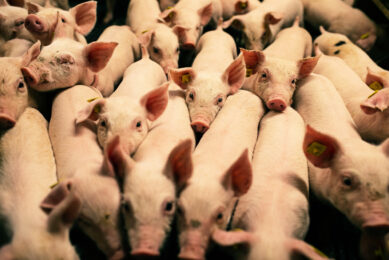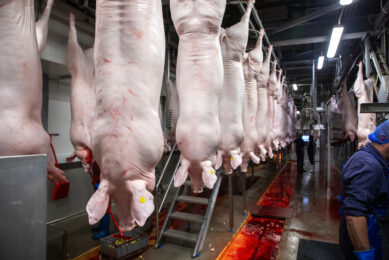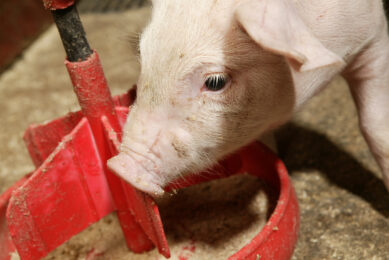Sow factors related to pre-weaning piglet mortality

Pre-weaning piglet mortality is an important cause for economic loss in swine production systems. It has been reported that one-fifth of all fetuses fully formed at the end of gestation die before weaning. Next to piglet birth weight, other sow level and management factors are likely to be associated with pre-weaning piglet deaths. Injuries and crushing due to the sow falling on the piglets while making postural changes constitute a major cause for pre-weaning piglet death.
By L. Anil1, S.S. Anil1, S.K. Baidoo1, J. Deen1, M.E. Wilson2 and T.L. Ward2. 1University of Minnesota, Saint Paul, MN, USA; 2Zinpro Corp., Eden Prairie, MN, USA
©
Claw lesions in pigs are putatively painful. Sows with severe claw lesions may be restricted in making the necessary postural adjustments while attempting to lie down within the limited space inside the farrowing crate. In pigs the support role is more important in the front limbs which are nearer to the centre of gravity. Further, observation of a sow lying down also suggests more movements associated with front limbs than the hind limbs. It is important to understand the factors associated with piglet death due to crushing to minimize the loss of live born piglets. The ©objective of the present study was to analyze the association of pre-weaning piglet death due to crushing with factors such as claw lesions, parity of the sow and gestation housing system.
©
Material and methods
This study involving 611 parity records of sows housed in group pens with electronic sow feeders (ESF) and 399 parity records of sows housed in conventional gestation stalls was conducted at the University of Minnesota, Southern Research and Outreach Center at Waseca. The lesions in the claws of these sows were examined at mid-gestation using a mechanical restraint designed for the purpose in one, two or three consecutive parities. The total claw lesion scores for front and ©hind limbs were obtained (Anil and others, 2007) by adding the lesion scores in different claw areas (side wall, heel, including overgrown heel, sole, heel-sole junction, and white line) of lateral and medial claws. Information on reasons for pre-weaning piglet mortality, parity of the sow and housing system were collected from the PigChamp database of the unit. The association of number of pre-weaning piglet mortality due to crushing with the parity of the sow, claw lesion scores in front and hind limbs, and gestation housing system was analysed using poisson regression (Proc genmod, SAS V 9.1) analysis with sow as a repeated measure. For analysis, parity of the sow was categorised into parities 1 and 2, 3 to 5 and >5.
©
Results
In this study 24% of pre-weaning piglet mortality was found to be due to crushing. Analysis indicated significant association between number of pre-weaning piglet deaths and parity of the sow, claw lesions and housing system. Sows of parities 1 and 2 and parities 3 to 5 had 61 and 36% lower piglet death due to crushing respectively, compared to sows of parity >5 (P<0.05 for both). For every unit increase in claw lesions in front limbs, the number of pre-weaning piglet death due to crushing increased by 8% (P<0.05). A higher hind limb claw lesion score was also associated with higher number of piglet death due to crushing, though this association was not statistically significant. Sows housed in group pens had 39% less piglet death due to crushing compared to sows housed in stalls during gestation.
©
Discussion and conclusion
The positive association observed between parity and piglet death due to crushing could be due to the smaller litter size in younger parity sows. An increase in number of piglet death due to crushing with an increase in front limb claw lesion score is suggestive of restriction due to pain in making the necessary postural movements to avoid uncontrollable falling within the farrowing crate, leading to a higher number of piglet crushing. A higher number of piglet crushing in stall housed sows could be related to a lack of exercise and consequent reduction in muscle weight and bone strength. This study indicated a positive association between higher pre-weaning piglet death due to crushing and factors such as higher parity, stall gestation housing system and higher claw lesion scores in front limbs.
©











